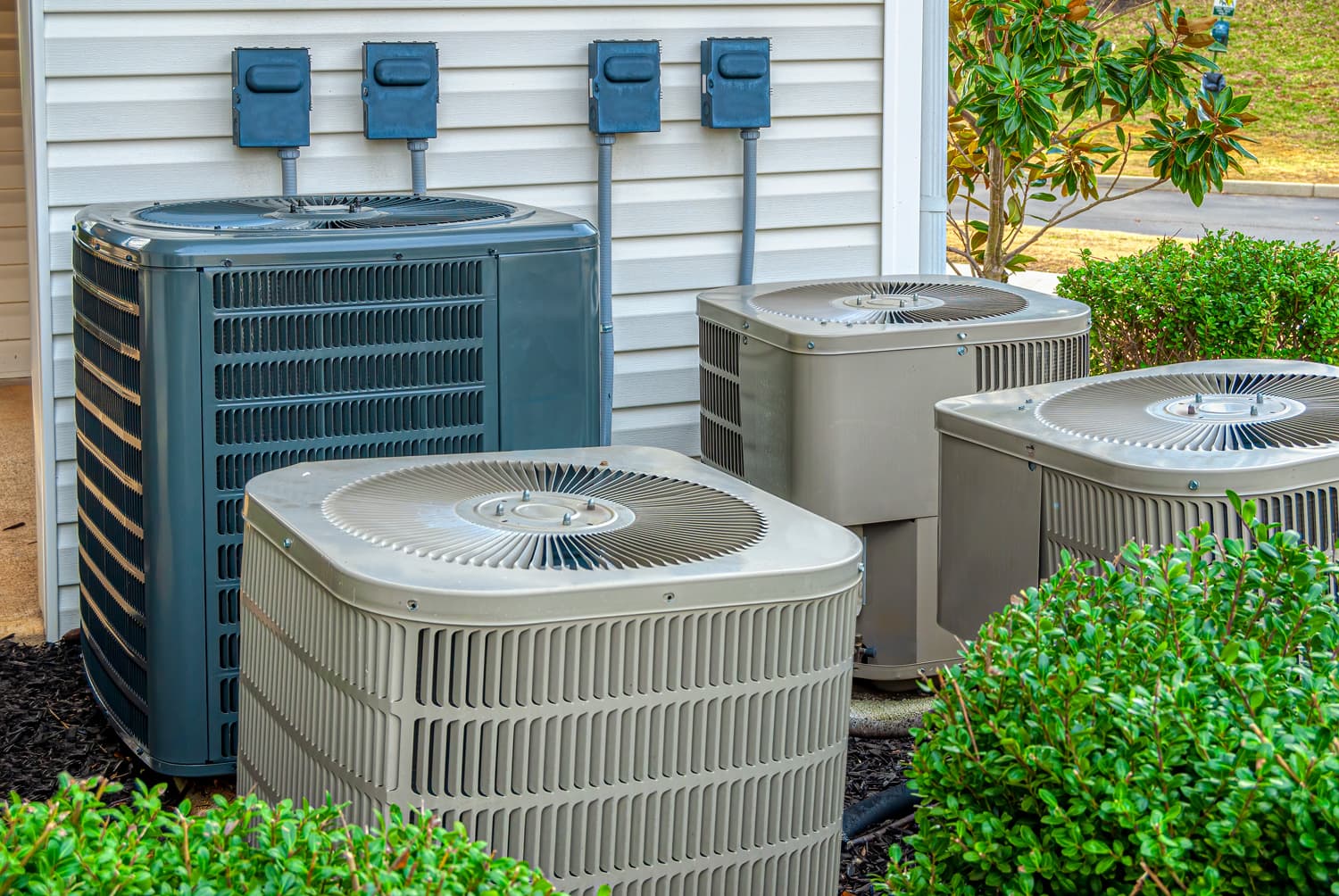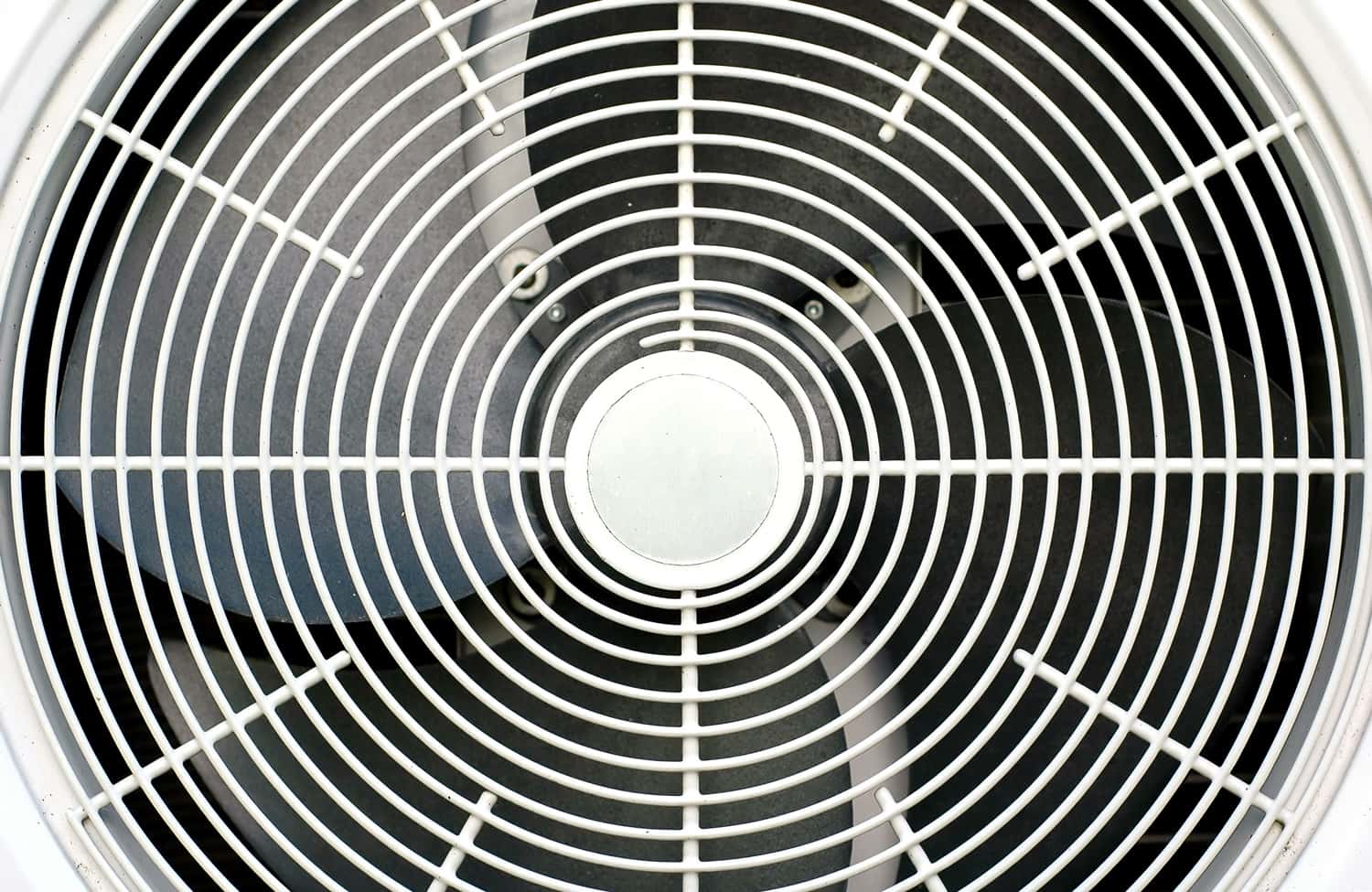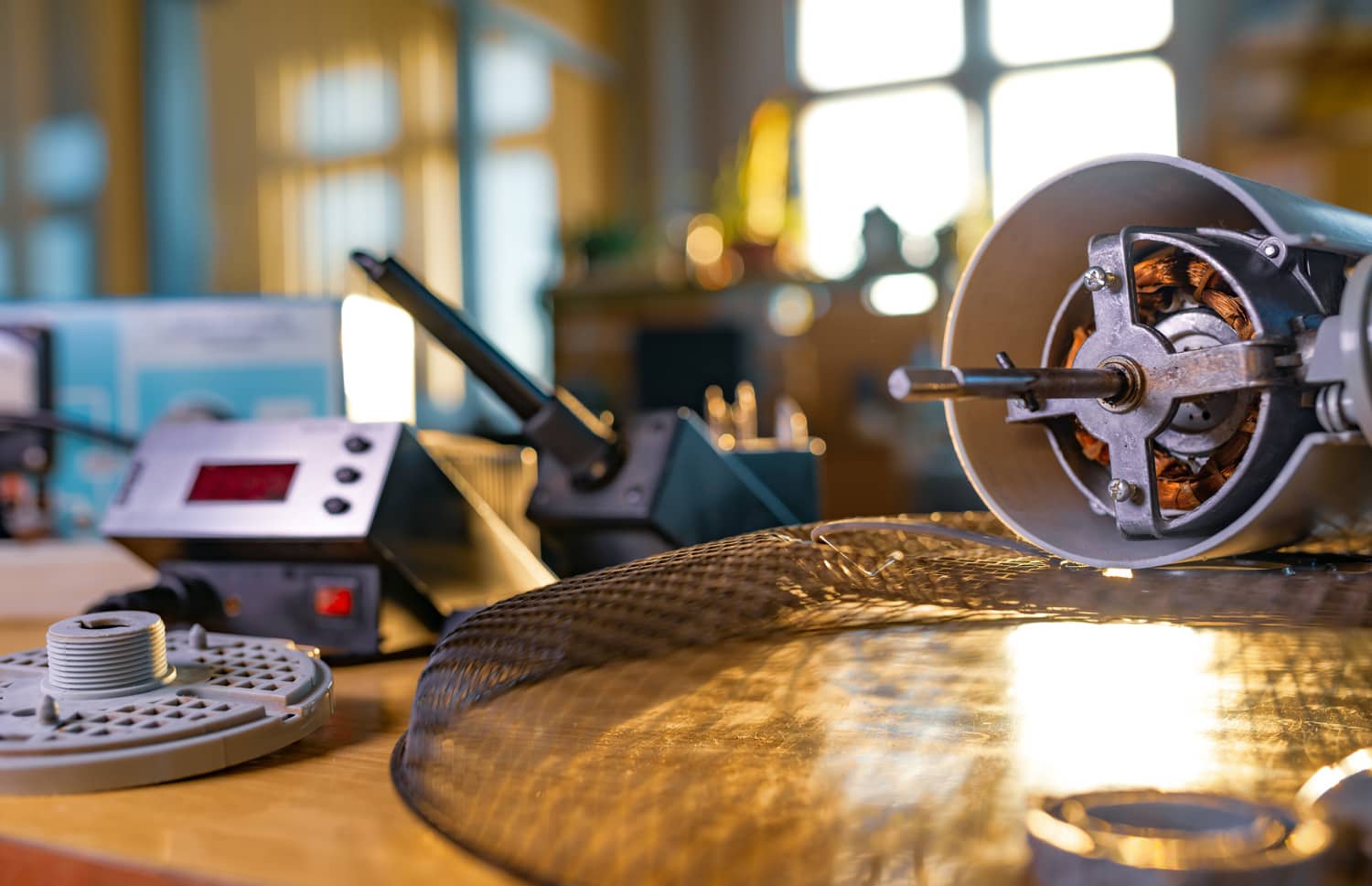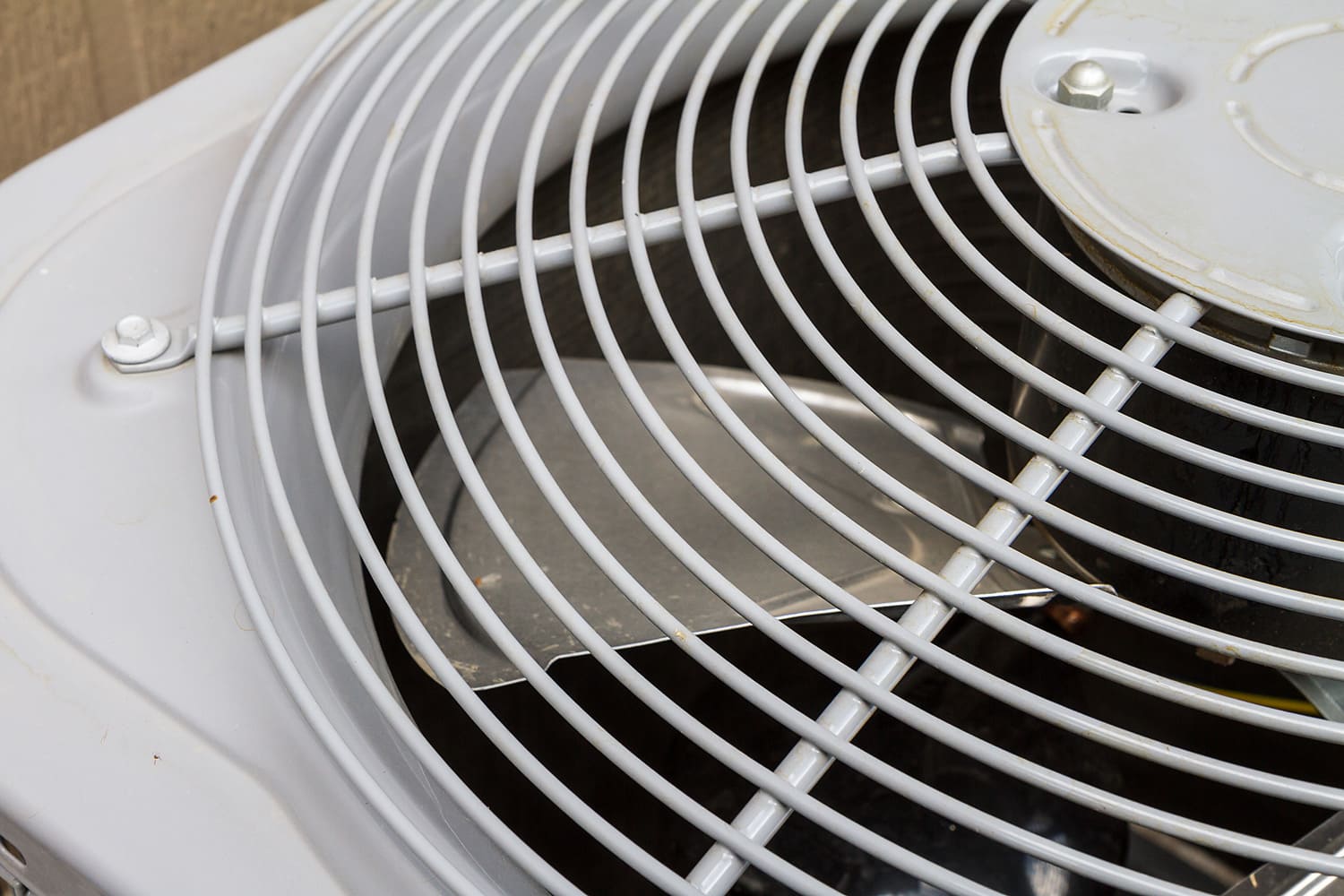If you notice that your AC unit might not be working properly, one of the things you need to check is the AC condenser fan. The AC's cooling fins should spin the air inward and expel it through the fan.
If your AC is not cooling your space effectively, the unit might not be running on its intended horsepower caused by your fan moving in reverse. From what we've learned on this subject, an AC condenser fan should spin in a particular direction.
Your AC condenser fan generally spins clockwise. However, for clarity, you can check the electric motor data tag on your motor to see if it should run clockwise (labeled 'CW') or counterclockwise (labeled 'CCW'). The portion of the fan blade that is slightly raised should also indicate the direction of its spin.
A condenser fan turning the other way will not produce cold air because it is not gathering enough for the evaporator coils. There may be a problem with the wiring, the motor itself, or with the capacitor. There are a lot of things you need to know first if you notice this problem.

Knowing Which Way Your AC Fan Should Spin

It is understandable if you are not familiar with the correct way your AC fan should spin. Fortunately, there are ways you can figure this out on your own. Here are some of the ways you can check its intended direction.
Identify your Fan Blade
Lay your fan blades flat on a table or the floor. You should notice that there is a portion of the blade that is raised: this indicates the fan's direction.
If the right side is raised, it should spin clockwise. The left-side raised means it turns counterclockwise.
Read the Electric Motor Data Tag
Some units have a manually reversible electric motor. You will notice that there are two wires: one purple and one yellow. Switch them up to make the fan spin in your desired direction.
You should also see a set of letters indicating its direction. 'CW' means clockwise, while 'CCW' means counterclockwise.
Why your Motor Fan Reverses Direction

Fixing your fan motor should begin with figuring out why it spun wrong in the first place. Here are some of its most probable reasons.
Read: "Air Conditioner Fan Not Running – What Could Be Wrong?"
Failed Capacitor
The capacitor is responsible for sending energy to your fan motor. Your AC unit has a lot of capacitors, including the one for your fan motor.
If your fan is having issues, your capacitor may likely be swollen or damaged which would need professional attention or replacement.
Faulty Belt
Older AC units may have belts that have worn off over time. This can cause the fan to malfunction, which can affect the performance of your entire unit.
Another reason your fans may be rotating wrong may be that the other air currents from other fans are on the same system: this is if you have a belt motor attached to fans in a multiple-blower HVAC system.
Crossed Wires
Your AC condenser fan may turn the other way if the wires are crossed. If your fan is designed to only turn clockwise, you will need to switch up the wires and take note of their polarity and magnetic field.
For manually-reversible electric motors, take note of the purple and yellow wires. Purple-to-purple means clockwise, while purple-to-yellow means counterclockwise.
It is better to call an HVAC professional to deal with inner wiring since it could be dangerous for a novice to handle.
Failing Motor
The motor is a critical part of your unit that keeps your AC and condenser fan functioning. A faulty motor will need detailed fixing or a replacement altogether.
Replacing your fan motor is not difficult, but it is recommended to have a professional guide you.
How to Change the Condenser Fan Motor

A damaged condenser fan motor may be the reason your AC fan is rotating in the opposite direction. You will need to be familiar with your AC's anatomy if you intend on repairing the fan motor yourself. Here is what you need to know.
Familiarize Yourself with the Correct Parts
You need to choose a motor that is completely compatible with your unit. You will need to select the one with the correct voltage, amps, horsepower, shaft size, rotations per minute, mounting style, frame, speed, and of course, direction.
Turn Off the Power
Your AC unit may have a certain amount of water in it. Water and electricity are dangerous together, so you should ensure that there is no electricity anywhere before you touch anything.
Remove the Panel
Loosen the screws and bolts across the panel to get to the condenser motor. This is a fairly easy job, but you will need to take note of what is inside the panel.
Take Detailed Notes or Pictures of the Inner Wirings and Parts
You will need to make a detailed diagram of the inner panel to know what goes where. Doing this will avoid time being wasted trying to put everything back together.
Take clear pictures and label them since having a picture alone may not be enough for later.
Remove the Fan and Motor
Unscrew the cage holding the fan. Pull off its hub using a puller or channel locks. After that, remove the mechanisms attaching the motor and the fan together. Get your new motor and get it ready to replace the old one.
Install the New Motor
Put your new motor back in by reversing the removal process. Follow your diagram to make sure all the wires are placed correctly.
Put the Fan in the Right Direction
Attach the fan, paying attention to the blades in the center of the unit. Make sure that it is facing the right way: whether it should be facing left or right.
Your fan should also be placed in the right depth from the motor and are sitting where the old one was. Refer to your photo for this.
Change the Capacitor
The capacitor comes hand in hand with the motor fan. If you change the motor, you will also need to change your capacitor. As such, it will need to be compatible with your motor fan.
Check your diagram and pictures to make sure you get all the wires connected right.
Check Where the Fan is Spinning
Now that all the necessary parts are attached, you can carefully turn the electricity back on. Check if the fan is working properly and if it is spinning in the right direction.
Screw the panel back on, and make sure everything is working smoothly. Make sure that you maintain your unit to avoid expensive repairs and to keep your home comfortable.
How much does it cost to replace a fan motor?

Replacing your fan motor is a necessity to avoid more rigorous and time-consuming repairs. Depending on the model, a fan motor costs between $300 to $600. It might cost more if you pay for labor.
A damaged fan motor may result in a broken compressor. A broken compressor is a bigger and costlier problem, which can make you shell out around $2,000 plus labor.
Check out this AC condenser fan motor on Amazon.
Identifying your AC Fan Blade

Replacing your fan means knowing its anatomy. You will need to take note of these important parts if you intend to buy a new one for your AC condenser unit.
Here are the different parts of your fan blade that you need to know.
- The Rotation is indicated by the slightly raised part of your blade.
- Take note of the number of blades if you want to replace your fan. Some fans have between 6 to 11 blades.
- The pitch is a projected width that is measured from the surface where your fan blade sits to the highest point of the fan itself.
- The fan pilot is a round-shaped opening at the center of the fan. You will need to measure this with a caliper. Specify if it is lemon-shaped, in which case it will have a consistent measurement.
- Take note of your fan's diameter as well. Measure it on at the widest opposite sides.
- Measure your dish. Take a tape through the pilot hole and measure from the floor up to the bottom of the fan plate.
Final Thoughts
The correct way your fan spins depends mainly on the type of AC condenser that you have.
A fan that is turning in reverse can lower the performance of your unit, so it is important to check this when you start noticing a problem. As with any appliance, maintenance and annual tune-ups are the keys to preventing issues like this from springing up.
If you enjoyed this article, check out "Can A Dyson Fan Replace An Air Conditioner?"

